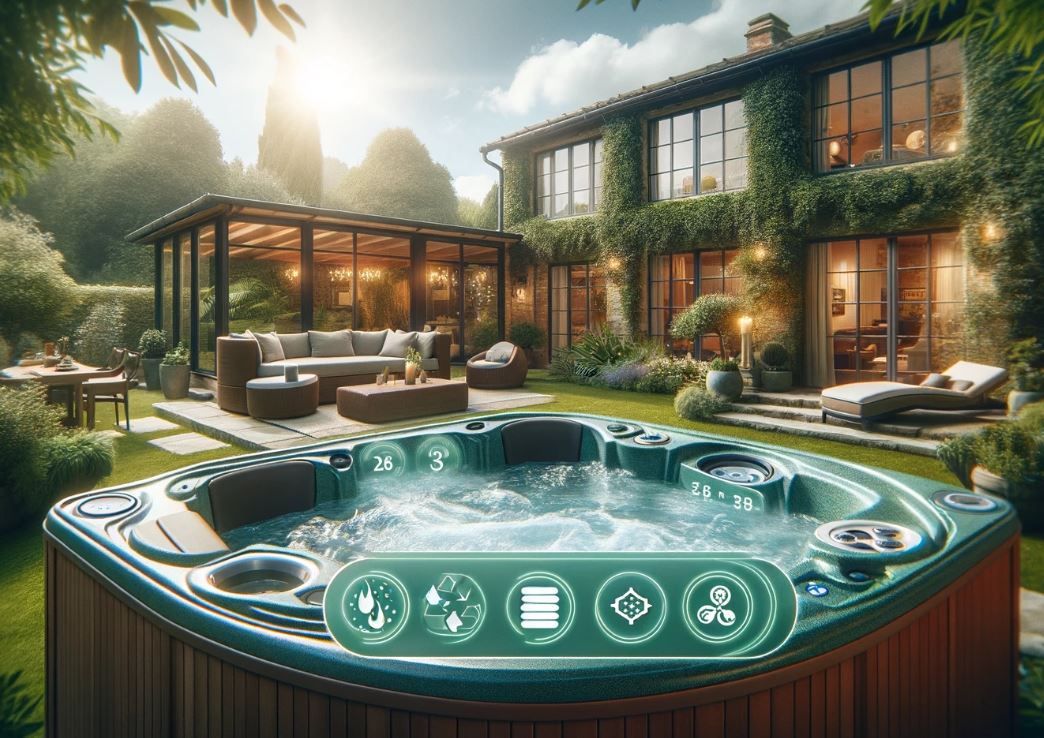Thinking about getting a hot tub? Or maybe you already own one and are starting to wonder about the costs? You're not alone. Many people in the UK love the idea of a hot tub in their garden but are often surprised by how much it costs to keep it running.
This blog is here to clear things up. We're going to break down all the costs involved in running a hot tub - from electricity to maintenance - so you can enjoy your hot tub without any nasty surprises on your energy bill.
Breakdown of Running Costs

Above shows the approximate costs of running a hot tub.
-
Electricity Usage: This is where the numbers start to get real. On average, a typical hot tub in the UK can cost anywhere from £30 to £50 per month in electricity, depending on the model, usage, and electricity rates. Larger tubs with less efficient heating systems can push this number even higher. It's worth checking your electricity tariff and considering a switch if you find a more economical option.
-
Water Usage and Maintenance: The water in your hot tub needs regular treatment with chemicals to keep it clean and safe. This can cost around £20 to £30 per month. Additionally, you'll need to completely drain and refill your hot tub several times a year, which adds to your water bill – though this is relatively minimal compared to the heating costs.
-
Repair and Long-term Maintenance: Like any home appliance, hot tubs require maintenance. Replacement filters, repairs, and professional servicing can add up. Setting aside around £200 annually for potential repairs and maintenance is a wise move to avoid unexpected financial surprises.
Types of Hot Tubs and Their Impact on Running Costs
Hot tubs in the UK come in various shapes and sizes, each with its unique impact on your wallet.
The popular inflatable hot tubs are a hit for their affordability and ease of installation, but they often lack the insulation capabilities of more permanent models, leading to higher heating costs.
Portable hot tubs offer a balance between convenience and efficiency, though their electrical demands can still surprise new owners.
In-ground hot tubs, the epitome of luxury, come with a steeper price tag but offer better insulation and, consequently, lower running costs in the long run. Understanding these differences is key to choosing a hot tub that aligns with your budget and lifestyle.
Factors Influencing the Running Costs of a Hot Tub
-
Size and Capacity: Bigger isn't always better when it comes to hot tubs, especially during current times where energy efficiency is crucial. A larger hot tub not only requires more water to fill but also more energy to heat. This means higher electricity bills, especially during those chilly British winters. It’s important to realistically assess how much space you need versus the ongoing costs associated with larger models.
-
Heating Systems: The heart of your hot tub’s running costs lies in its heating system. Electric heaters, common in portable and inflatable models, are easy to install but can be heavy on electricity usage. Gas heaters, on the other hand, might offer savings if you have access to natural gas. Solar heating systems are emerging as an eco-friendly option, though the initial setup costs and the UK’s variable weather patterns can affect their efficiency.
-
Insulation and Heat Retention: Insulation is your best friend when it comes to hot tubs in the UK. Quality insulation keeps the heat in, reducing the energy required to maintain your desired temperature. This is particularly crucial in the cooler months. Look for hot tubs with high-grade insulation, or consider upgrading your existing tub with better insulation materials.
-
Frequency of Use: How often you use your hot tub significantly impacts your energy bills. Regular use means the heater and filters are working more frequently, leading to higher running costs. Balancing your usage with energy-saving measures can help keep costs manageable.
Energy-Efficiency Tips
Making your hot tub more energy-efficient is not just good for your wallet; it's great for the planet too.
Using a well-fitted cover when the hot tub is not in use is one of the simplest yet most effective ways to reduce energy costs. It prevents heat loss, meaning less energy is needed to maintain the water temperature.
Also, consider lowering the temperature setting by a few degrees – this small change can lead to significant savings over time.
Additionally, newer hot tub models come with eco-friendly features like low-energy pumps and better insulation, making them worth considering for long-term savings.
Additional Costs to Consider
-
Installation Costs: Depending on the type of hot tub you choose, installation costs in the UK can vary widely. Inflatable and portable hot tubs generally require minimal installation costs – often just the price of a good foundation or pad. In-ground hot tubs, however, can involve considerable installation expenses, sometimes reaching thousands of pounds, due to the need for professional installation, electrical work, and potential landscaping.
-
Accessories and Extras: Who doesn’t love a bit of extra luxury? LED lights, additional jets, and sound systems can enhance your hot tub experience but remember, these extras come at a cost. Not only do they increase the initial purchase price, but some, like additional jets, can also increase your hot tub's energy consumption.
Real-Life Cost Examples
To put things into perspective, let's look at some real-life scenarios.
John from Manchester owns a mid-sized portable hot tub and spends about £40 per month on electricity and £25 on maintenance, totalling £780 annually. Meanwhile, Sarah in London opted for a high-end in-ground model with superior insulation, resulting in slightly lower monthly costs of around £35 for electricity and £20 for maintenance, totalling £660 annually.
These examples show how various factors contribute to the overall running costs of a hot tub in the UK.
How to Budget for a Hot Tub
-
Evaluate Total Cost of Ownership: Consider all costs involved, including the purchase price, installation fees, and ongoing running expenses (electricity, water, maintenance).
-
Assess Long-term Financial Commitment: Think beyond the initial purchase and focus on the continuous costs over the years.
-
Explore Financing Options: If the upfront cost is high, check out financing plans offered by retailers to spread out the expense.
-
Balance Value and Expense: Weigh the benefits and enjoyment the hot tub brings against its regular costs.
-
Plan for Future Expenses: Set aside a budget for potential repairs and maintenance in the long run.
Conclusion
Owning a hot tub in the UK is a delightful luxury that comes with its set of financial considerations. By understanding the types of hot tubs available, their running costs, and how to make them more energy-efficient, you can make an informed decision that suits your lifestyle and budget. Remember, the joy of unwinding in your private spa can be priceless, but it's crucial to keep the costs in check to ensure it remains a source of relaxation, not financial stress.
Here's our three key takeaway points:
-
Understand the Full Scope of Costs: Owning a hot tub in the UK involves more than just the initial purchase price. Prospective and current owners need to be aware of the ongoing expenses such as electricity, water, and maintenance costs, which can significantly impact the total cost of ownership.
-
Energy Efficiency is Crucial: The type of hot tub, its size, insulation quality, and heating system greatly affect energy consumption and running costs. Choosing energy-efficient models and adopting practices like using a cover and optimizing temperature settings can lead to substantial savings.
-
Budget Wisely for Long-term Enjoyment: Hot tub ownership should be a balance of pleasure and practicality. It's important to budget for both upfront and recurring costs, and to consider financing options if necessary. Regular maintenance and a proactive approach to repairs are key to ensuring that the hot tub remains a source of relaxation rather than financial stress.
Call to Action
If you're in need of a hot tub, we sell a wide range here at Trade Warehouse. Get in touch if you have any queries: info@tradewarehouse.co.uk
Check out our other blog posts for more insights or get in touch for personalized advice. Y

